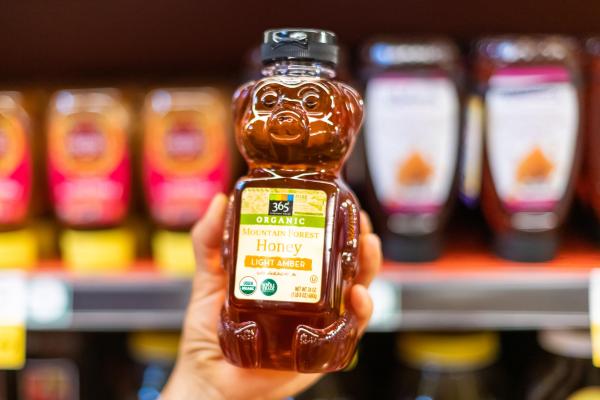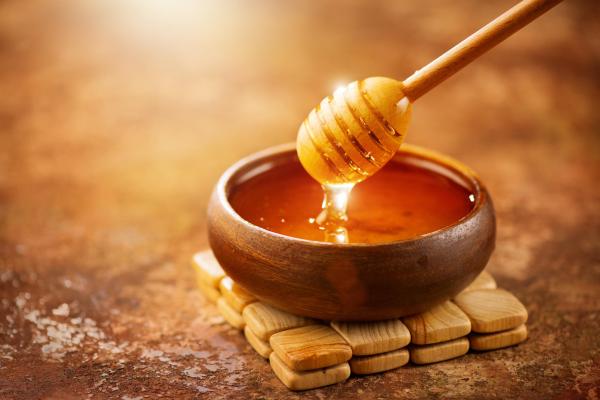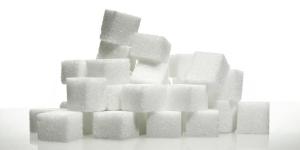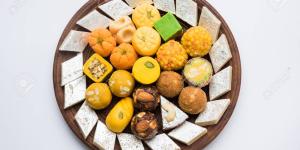How to Tell if Honey Is Pure or Adulterated


Pure honey means that the product is, indeed, 100% honey and does not contain other ingredients such as corn syrup or water which are sometimes added to industrial honeys to reduce costs. Nowadays, however, it is increasingly difficult to find this type of product in stores or markets, as most honey contains some type of additive or conservative. There are many rumors circulating about different ways to test honey for purity, but many of them have not been scientifically tested. It is impossible to detect all possible additives in honey with a single test at home, but you can do a few things to test fake honey.
In this oneHOWTO article, we explain how to distinguish pure honey from adulterated honey.
Read the label carefully
The first thing you should do is read the label carefully. Look for substances sold under a different name, such as "honey blends" or "honey products." Pure honey should contain only one ingredient: Honey. So stay away from honey that claims to contain ingredients like commercial glucose or fructose syrup in its composition description. It should also not contain water or any type of preservative. In fact, pure honey does not need to be preserved because, technically, honey does not expire. However, note that it is common practice to indicate in the product information the date of extraction and preferred consumption, which refers to the period during which the honey is in optimal condition and retains all its properties.
If eating natural honey is important to you, you might be interested in a type of honey that comes from bees that pollinate the Manuka bush in New Zealand, which is becoming increasingly popular for its amazing properties.

Pay attention to the texture
Natural bee honey has a smooth and viscous texture, neither too solid (unless crystallized) nor too liquid. However, there are different types of pure honey, which can have a wide range of density, flammability and other properties. Therefore, in practice, the texture is not always meaningful in determining the purity of honey. As a general rule, pure honey is thick, while impure honey is liquid. Pure honey adheres to the surface to which it is applied and does not drip.
If you want to put the texture of your honey to the test, try this:
Put a small amount of honey on a finger and see if it stays there when you move your finger slightly. If it "squirts", it is definitely not pure honey.
Also, if you take a portion of honey with a spoon and pour it out, the honey should not fall suddenly, not even in drops, but should slide slowly and drip in the form of threads or filaments.
Pay attention to the color and aroma
Even if, it is not a secret: pure honey only smells like honey. If you notice a strange aroma when you open the container, it may indicate that other artificial substances have been added to the honey. Also, if you try to open a new jar of honey, and you hear a small popping sound, it could be a sign that the honey is actually adulterated. This usually happens when fermentation takes place inside the bottle.
The color varies depending on the type of honey and the plant of origin, but it is always more or less intense amber color and has a special shine. It is common, although not always the case, that pure honey contains visible microparticles of wax or pollen.
Honey has been used for centuries for all kinds of beauty treatments, because it works wonders for skin and hair. But did you know that you can also use honey for hair removal? Read this other article to learn how you can remove hair with honey without irritating the skin.
The water test
The water test is quite simple and probably the best known. Just put a tablespoon of honey in a glass of warm water. Pure honey has a denser texture and will therefore settle as lumps at the bottom of the glass. Remember that it is normal for pure honey to dissolve if you stir it with a spoon.
Fake or adulterated honey, on the other hand, will dissolve in water even without stirring.
You do not have to spend a fortune to have beautiful and well hydrated hair, because there are a number of natural products that you can use to achieve the same results.

The paper towel test
Another way to distinguish natural from cultured honey is to drip some honey on blotting paper or a paper towel.
Adulterated honey, especially if it has been mixed with water, will leave a wet stain on an absorbent material like blotting paper.
Pure honey, on the other hand, should not be absorbed by the paper. Unfortunately, this test cannot determine if the honey has been diluted with sugar syrups, as it will not leave a mark on an absorbent material either.
Honey has been used for centuries for its medicinal properties and therapeutic benefits. Recent research has proven that it is also effective in eliminating scars.
The vinegar test
The vinegar you use for cooking is also a good indicator of adulterated honey. If you want to know if your honey is adulterated, mix a tablespoon of honey, some water and 2-3 drops of vinegar in a glass.
Pure honey will show no reaction when it comes into contact with vinegar. Adulterated honey, on the other hand, will produce small bubbles or foam almost immediately.
If your lips feel dry, there's no better ally than a super moisturizing and nourishing lip balm that helps repair tissue damage instantly.
The heat test
Another simple trick to distinguish real honey from adulterated honey is to put a small amount in a pot and put it in the fire. Pure honey will caramelize quickly and not become foamy. Adulterated honey, on the other hand, takes longer and may even just boil without caramelizing.
You can also very carefully hold a match near the honey. You may not have known this, but pure honey is flammable, so if it burns, it is pure.

The crystallization test
Crystallization is a phenomenon that shows how the sugar molecules in honey tend to combine into microcrystals that give honey a denser texture than normal and in some cases even solidify it. This is something that is completely natural. Therefore, if you see honey in this form, it is not a sign of a bad condition, but on the contrary, a sign that the honey is pure.
With time, and especially at low temperatures, pure honey always crystallizes. So, if you want to check if the honey you have at home is pure or adulterated, put the jar in the refrigerator and see if it crystallizes after a few hours or days. If it does, then it is pure. Bear in mind that some additives are used specifically to prevent crystallization.
Honey is one of the best antiseptics and antibiotics in nature, with important healing properties that help improve the appearance of our skin after injuries while preventing infections.
If you want to read similar articles to How to Tell if Honey Is Pure or Adulterated, we recommend you visit our Food & drink category.







